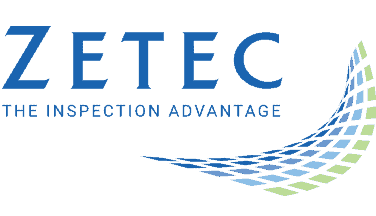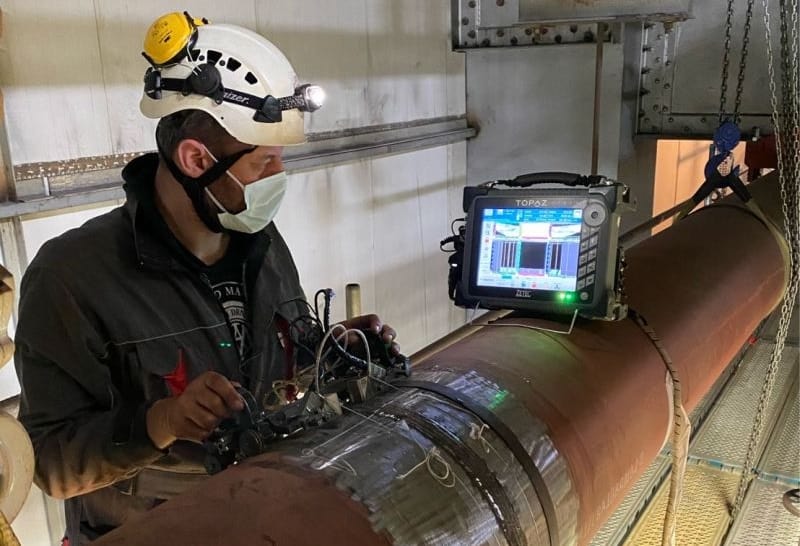Ultrasonic Detection of Defects in Metals
Inspection of metals throughout different metalworking processes like casting, forging, or welding has been an integral part of the quality control process for industries. This is to make sure that the metal component is up to the industrial standard and can perform the operation reliably without any defects hindering the process. Many inspection processes have been introduced and adopted but one of the most effective in ensuring material integrity of cast and forged metal stock, tubes, and plates is ultrasonic testing (UT).
Newly cast or forged metal can have many sources of defects. Some of them may arise from inaccurate heat treatment, lack of proper vents, lack of metal cleanliness, or presence of inclusion. The result: wide range of defects including pores, cracks, and inclusions.
Ultrasonic inspection has been extremely effective in examining the quality of these metals. The utilization of advanced instruments, scanners, and probes has made ultrasonic detection of defects in metals easier with the ability to identify minute flaws in reduced time and in greater detail.
Learn more about NDT inspection of pipes, tubes, and other steel products.
Ensuring Structural Integrity with Ultrasonic Detection of Defects in Metals
Many industries use the non-destructive testing (NDT) method of ultrasonic inspection for its efficiency and accuracy in identifying flaws. It does so by introducing high-frequency ultrasonic waves through the transducer to the metal being tested. The reflected wave can be analyzed to identify the potential defects in the structure. The major advantage in utilizing this method is that the structure can be inspected during any phase of the manufacturing process be it pre- or post-service.
Learn more about ultrasonic testing.
In metal inspection, ultrasonic testing can facilitate seamless volumetric inspection at each phase of the manufacturing process from raw material to the finished part in order to support productivity and efficiency goals.
Ensuring Material Integrity with Ultrasonic Testing
Structural integrity is compromised when metal surface depletes due to stress or environmental conditions. The common issue we observe in such cases is the formation of cracks or microfractures. These can be visually undetectable and can be potentially dangerous if present on components like turbine blades or wheels and axles. Phased array ultrasonic testing (PAUT)— with its controlled and focused inspection ability—can identify these cracks and fractures in metal surfaces with great precision. The use of multiple transducers facilitates larger coverage and rapid inspection to ensure efficient crack detection.
Read more about ultrasonic crack detection equipment in infrastructure and transportation.
Thickness measurement is essential to identify potential corrosion or erosion in metals. This type of defect can mostly be observed in pipelines, or ship hulls, or storage tanks. Phased array ultrasonic testing can be beneficial for industries that require the identification of small changes in thickness that may result from metal loss. Utilizing time-of-flight-diffraction (TOFD) or pulse-echo technique, ultrasonic probes can identify small changes in metal thickness. However, it is necessary to note that ultrasonic testing can have thickness limitations and may not be suitable for extremely thin metals.
Learn more about thickness measurement with ultrasonic testing.
Metal stock or plates commonly have defects like inclusions which can give rise to cracks or porosity in the metal. Slag, sand, or flux materials can get included during welding or casting of the metal. With PAUT testing, these small inclusions ingrained in the metal can be easily identified. Locating the inclusion is important in identifying the quality of the metal.
Learn more about detecting non-metallic inclusions with ultrasonic testing.
Inspecting Welds for Ultrasonic Detection of Defects in Metals
Not very different from processes like casting or forging, fabrication through welding can also significantly affect the properties of the metal and give rise to potential defects in the structure. While much destructive and non-destructive testing has been utilized for the inspection, phased array ultrasonic testing has been able to provide highlyprecise and accurate inspection results.
Learn more about the destructive and non-destructive testing of welds.
The differing properties of dissimilar metals can lead to the issues in welding like lack of fusion, inclusion, porosity, and cracking. Across different industries, an inspection of dissimilar metals has been done with the help of phased array ultrasonic testing which can effectively identify, locate, and size the flaws providing industries with the opportunity to promote safety and cost-efficiency.
Learn more about inspecting dissimilar metal welds.
The major challenge in boiler tube weld inspection can be operation downtime and resources. Phased array ultrasonic inspection acts upon these drawbacks by providing volumetric inspection and rapid analysis ability for a varying range of tube diameters. PAUT with TOFD enables accuracy and precision for better defect detection and characterization.
Learn more about boiler tube inspection.
In various industries, phased array ultrasonic testing has been used not only to inspect the final product but also to inspect metals in the manufacturing progress. This gradual inspection of metal can be beneficial in improving the quality of the finished component. PAUT detection of defects in metals is effective in reflecting defects in the metal to make sure safety and productivity be the primary focus of the industry.
Zetec has been a leading provider of NDT instruments, probes, and scanners for decades assisting you with assessing the quality of your metal structures. To learn more about our ultrasonic inspection solutions, contact us today.






